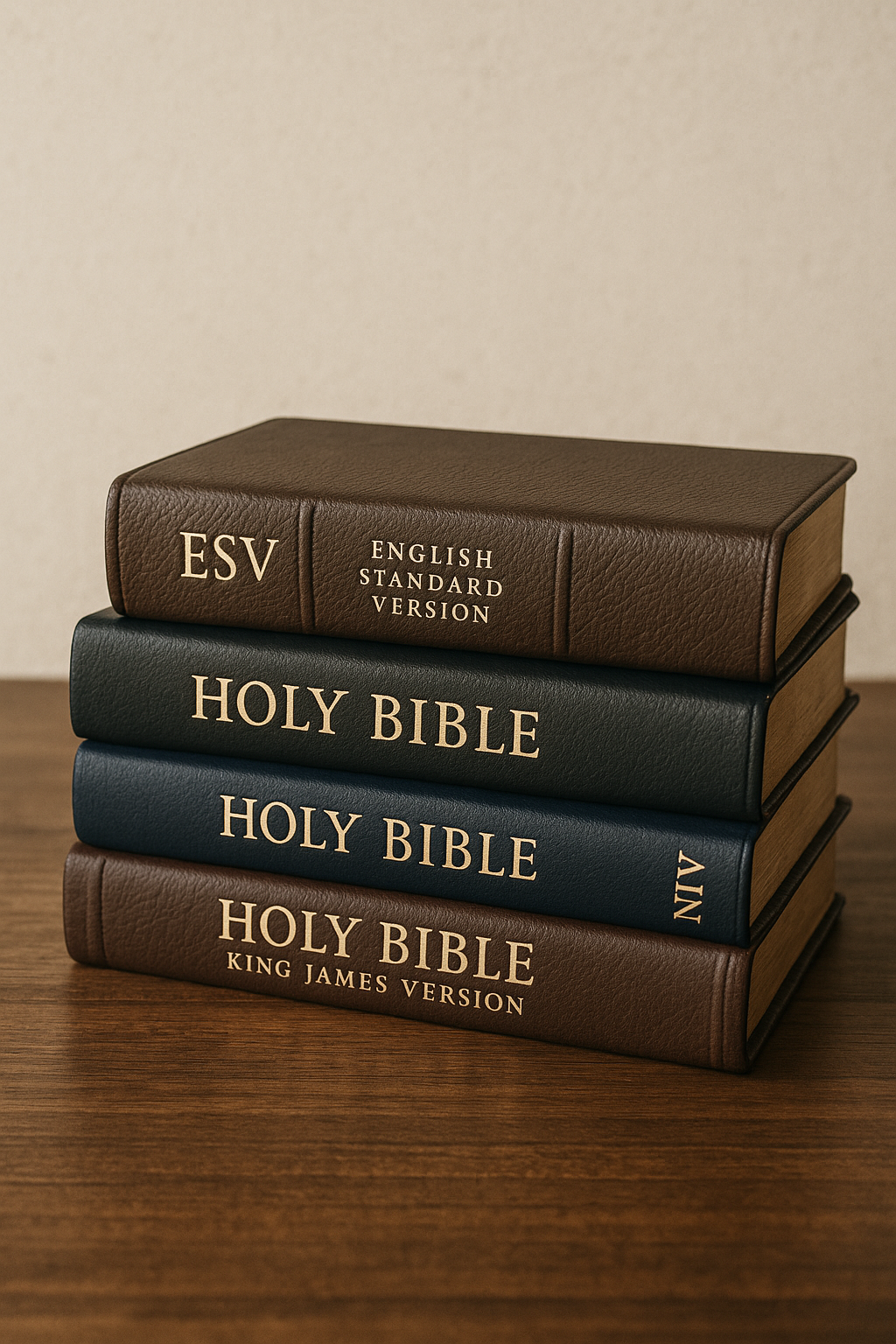For many Christians who have not read much of the Bible, the first challenge is not understanding the stories or the doctrines but simply deciding which translation to pick up. The shelves are lined with editions that all look the same, yet each promises a slightly different path into the Word of God. Some are described as precise, others as clear, and others as devotional. The question is not whether they all carry authority. The question is which one will help you actually open the Scriptures and read them consistently.
Choosing Between Approaches
The reason there are multiple translations is because the Bible was originally written in Hebrew, Aramaic, and Greek. No language transfers word for word into another without choices, so translators must decide what to prioritize. Some keep as close as possible to the original structure and wording, producing what are often called “word-for-word” translations. Others try to capture the meaning in natural English sentences, producing what are called “thought-for-thought” translations. Still others go further, paraphrasing the sense of a passage in everyday language.
Those who choose a word-for-word translation, such as the English Standard Version or the New American Standard Bible, gain accuracy and closeness to the original text. These are strong tools for careful study and for readers willing to slow down and wrestle with phrasing. The cost is that such translations can feel formal or even stiff. They do not always flow easily, and for someone new to Scripture that can be discouraging. Thought-for-thought translations, such as the New International Version, the Christian Standard Bible, or the New Living Translation, remove some of that barrier. They preserve faithfulness to the text while making the message accessible in smoother English. A beginner who has never really read the Bible will often find that these versions invite them in where others push them away.
Paraphrases, such as The Message, stand in a different category. They are legitimate in that they aim to convey the truths of Scripture, but they take greater freedom in expression. They can be refreshing to read, especially alongside another Bible, but they should not be relied upon as the only source. They are best received as companions rather than primary guides.
The Role of Tradition
No discussion of translations is complete without mentioning the King James Version. For centuries it has shaped English-speaking Christianity, and its language still carries a certain majesty. Yet its beauty also carries difficulty. Words no longer mean what they did four hundred years ago, and for the modern beginner, the result is confusion. Some groups insist that the KJV is the only true Bible, but this is simply not correct. The Word of God is not bound to one historic edition. If someone desires something in the tradition of the KJV, the New King James Version is a stronger recommendation. It preserves the cadence of the old but speaks in modern English.
Why Reading Level Matters
One of the most overlooked realities in choosing a Bible is the reading level. A Bible written at a twelfth-grade level will inevitably lose readers who are new to the Scriptures. This is not a matter of intelligence but of accessibility. The English Standard Version, for example, sits at around a tenth-grade reading level. The New American Standard is even higher. By contrast, the New International Version is closer to seventh grade, and the New Living Translation is around sixth. That difference may determine whether a new reader builds a daily habit or sets the Bible aside in frustration. For those beginning the journey, readability is not a luxury; it is often the difference between perseverance and neglect.
Guidance for Beginners
If you are just starting to read the Bible, choose a translation that you can understand without strain. The NIV, NLT, or CSB are excellent Bible translations for beginners for that reason. They are faithful, approachable, and written in modern English. As you become more comfortable, you may find value in keeping an ESV at hand for study or for hearing the text in a more formal style. You may also benefit from reading the same passage in two translations side by side. Psalm 23, for example, will sound majestic in the ESV and deeply personal in the NLT. Each brings out something valuable, and together they remind you that God’s Word is rich enough to shine through more than one English rendering.
To here about the comparison between the NIV and ESV, two of the most popular Bible Translations in recent years, check out this article here!
A Word of Gratitude
It is important to remember that the ability to choose among translations is a blessing that many believers around the world do not have. In some countries, Christians share a single Bible among an entire congregation. Others risk persecution simply to own one. Still others long for a translation in their own language at all. The fact that you can stand before a shelf and decide between an NIV and an ESV is not a burden but a gift. Hold your Bible with gratitude, whatever translation it may be, and use it well.
Conclusion
The question of which Bible translation to read should not leave you paralyzed. The Word of God speaks clearly in every faithful English version. Some are more literal, some more fluid, but all point you to Christ. Begin with the one that keeps you reading, and let it lead you deeper into God’s truth. In time you may explore others, but the most important step is to open the Bible you have and allow it to shape your life.

Leave a Reply